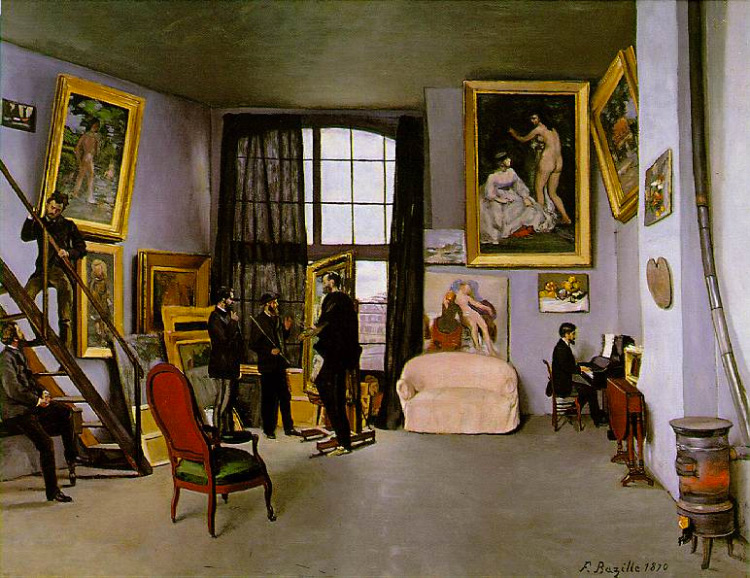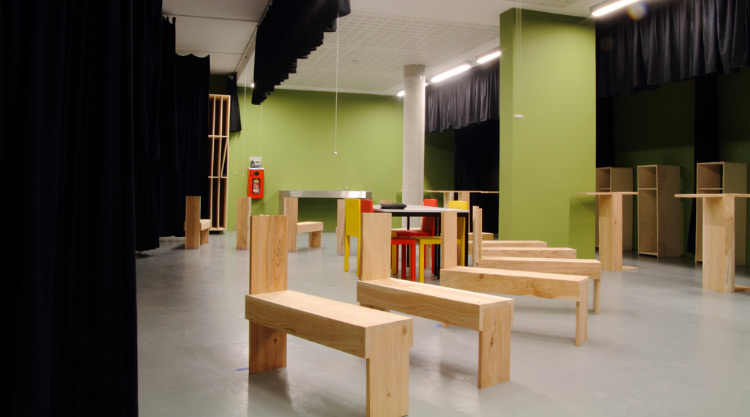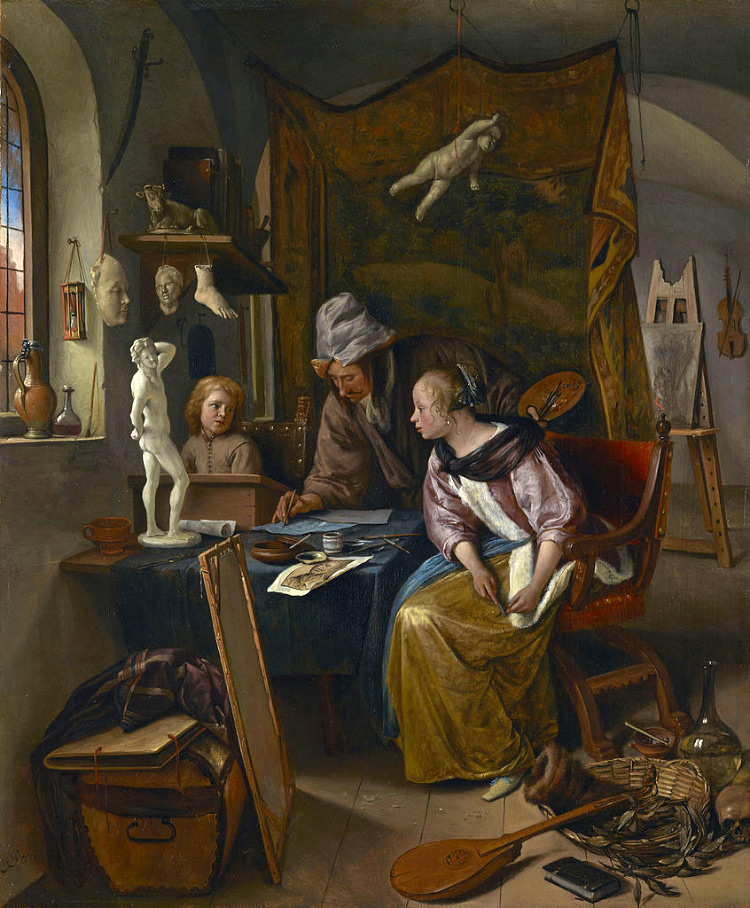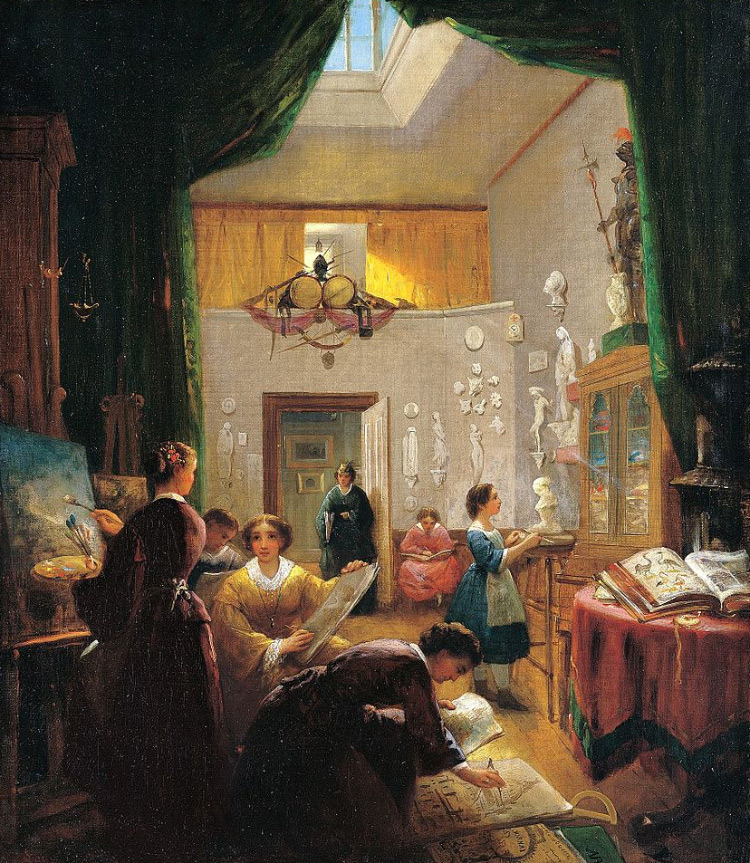What is an Art Atelier?
What is an Art Atelier?
Tips Disclosure: This post may contain affiliate links. That means if y'all buy something we get a minor committee at no extra cost to you(learn more than)
An atelier is both the workshop of an creative person, and where a professional person artist trains apprentices in the fine arts.
Ateliers were the most pop style of learning fine arts in the 18th and 19th centuries. Sculptors, painters, and later on photographers all ran successful ateliers that trained students and produced incredible works of art.
In Western Europe and North America you tin can trace the atelier lineage of many renowned artists.
Modernistic ateliers notwithstanding exist and they follow many of the same teaching principles with a focus on fine art.
A primary artist runs the atelier and trains students in the technical skill of three-dimensional representation. By the end of their training a student will be able to produce realistic piece of work with impressive accuracy.
The tradition of atelier is non limited to the fine arts. Haute couture fashion designers often accept ateliers of their own also. In these sanctuaries they gradually teach a small number of apprentices, fit models, and pattern new creations.
Studying At An Atelier
In modernistic times a student's training volition take between three and 6 years to consummate.
Historically this flow could be longer if the student started when they were very young.

Fine fine art ateliers teach realism and techniques used in classical paintings. Artists like Paul De La Roche(1856) and Jean Leon Gerome(1904) were both trained in ateliers and went on to train others in ateliers of their own.
Their painting styles are distinctly realistic with a focus on the human being class.
The study is always full-time and intensive. Days last an boilerplate of seven hours and mostly consist of creating. The day will exist divided into the written report of live models and still life objects. Depending on the level of the student, the principal volition give technique, beefcake, and history lessons as they run across fit.
A kickoff-twelvemonth student will rarely touch a paintbrush. Instead they will practise figure drawing using merely charcoal. The use of a single medium allows the educatee to focus on the form and representation of the subject area without distraction.
By the second year, the skill of painting will slowly be introduced. Limited to a grayscale palette, students learn the mechanics of painting and how to paint the three-dimensional form without colour.

Every bit students progress further they are taught to paint with color. At each stage of the procedure a student must satisfy the instructor to progress. If the master artist believes as educatee has non learned the technique, they volition go on to exercise until they succeed.
In days of old, students had to graduate or receive their master's approving before they were allowed to sign their work. Modern day restrictions are a scrap more relaxed.
The Sight-Size Method
One of the signature teachings of an atelier is the sight-size method.
It is the technique that allows realist painters to correctly depict proportion without making mistakes as often. It is a educational activity method that has been passed down from master to educatee for generations.
The size-site method is one of the commencement lessons a student volition learn and it'south especially crucial at ateliers.
A canvas or sketch pad is placed in an upright position a distance abroad from the model. The creative person needs to stand and so they can see both the model and the sail.
Then theu measure out the proportions of the model and direct transfer them to the newspaper. The drawing should match the size of the object from that vantage point.
Using this method it's possible to capture the exact proportions directly from life. An excellent educational activity method for anyone studying realist.

Differences Between Mod Ateliers and Higher
The training received at a university or college is significantly unlike to an atelier.
The biggest difference is an atelier's focus on classical training and drawing from life.
At a college or university you'll be taught a large amount of theory and art history. Contemporary art similar installation pieces and performance art is acceptable and oft encouraged.
College students are not always required to draw from life, and a vast number of techniques and styles are covered in a brusk time.
At an atelier students are required to focus on creating realistic artwork that correctly represents life. They are only allowed to depict from life and are restricted in the mediums and techniques they can use.
If you cull to study at an atelier you lot volition receive strict, classical preparation that focuses on technique and not the concept.

Many atelier students went to college outset and were surprised to discover the artistic level of an atelier much higher than the standards at private schools.
In modern times experienced artists and college graduates looking to improve their realist art skills volition go to an atelier whenever possible. They almost always pay for their own tuition because ateliers are far cheaper than any academy.
This is one of the best ways for modern artists to really embrace the teachings of old masters.
If you'd like to get a classical training at an atelier you can go to several schools effectually the world.
Charles H. Cecil Studios in Florence, Italy provides three years of training nether Cecil himself. The Atelier Studio Program of Fine Art in Minneapolis has an impressive seven generations lineage.
If yous look around you'll find dozens of ateliers across Europe, Canada, the UK and the United states of america(among other places likewise!)
Yous can search for an atelier school by country on the Art Renewal website.
If you aim to create realistic works of art then training at an atelier is the right choice.
Through classical training methods and intense study from life you can larn to create realistic works of art you never thought possible.
maldonadofars1954.blogspot.com
Source: https://conceptartempire.com/art-ateliers/
Post a Comment for "What is an Art Atelier?"